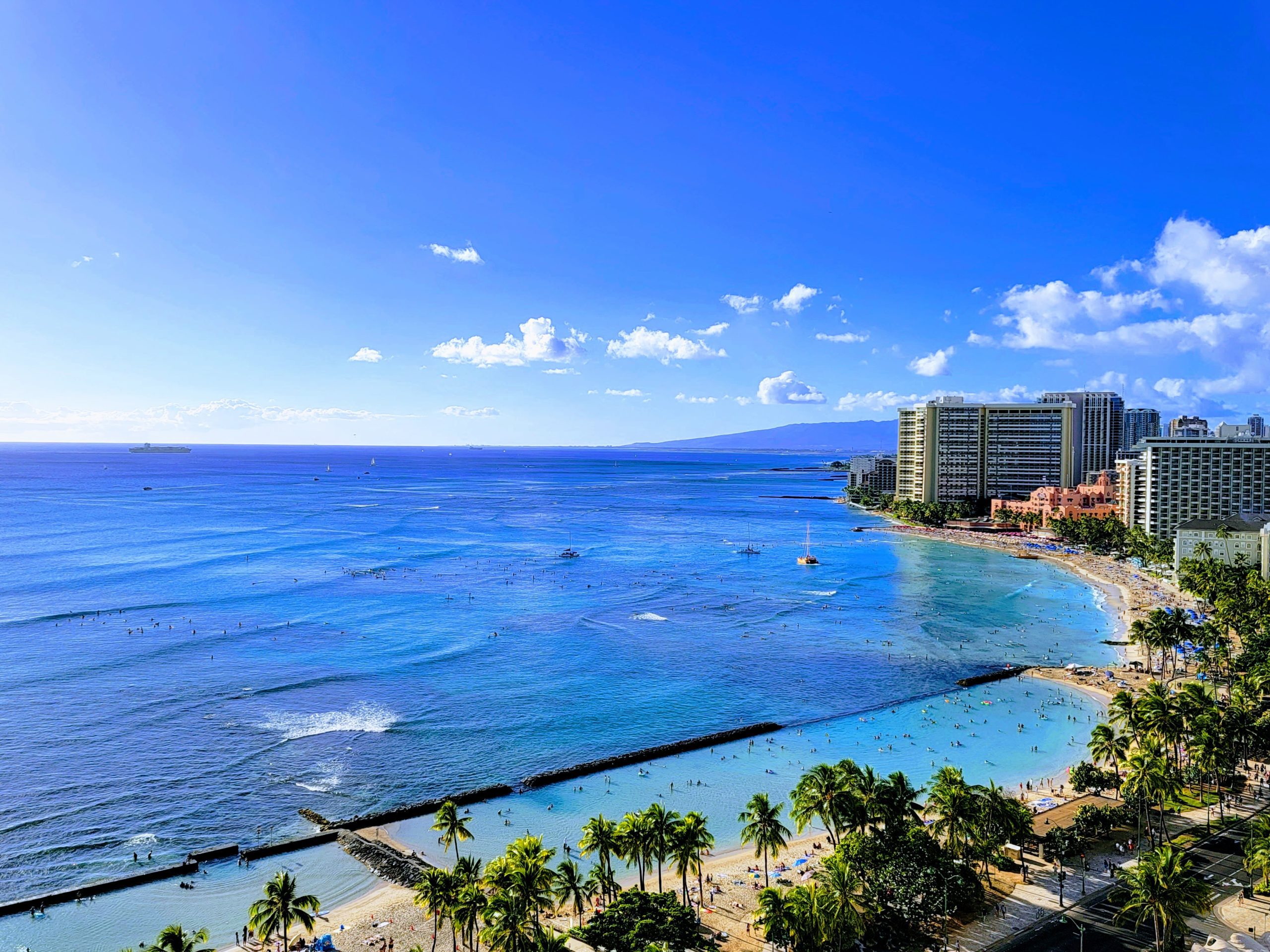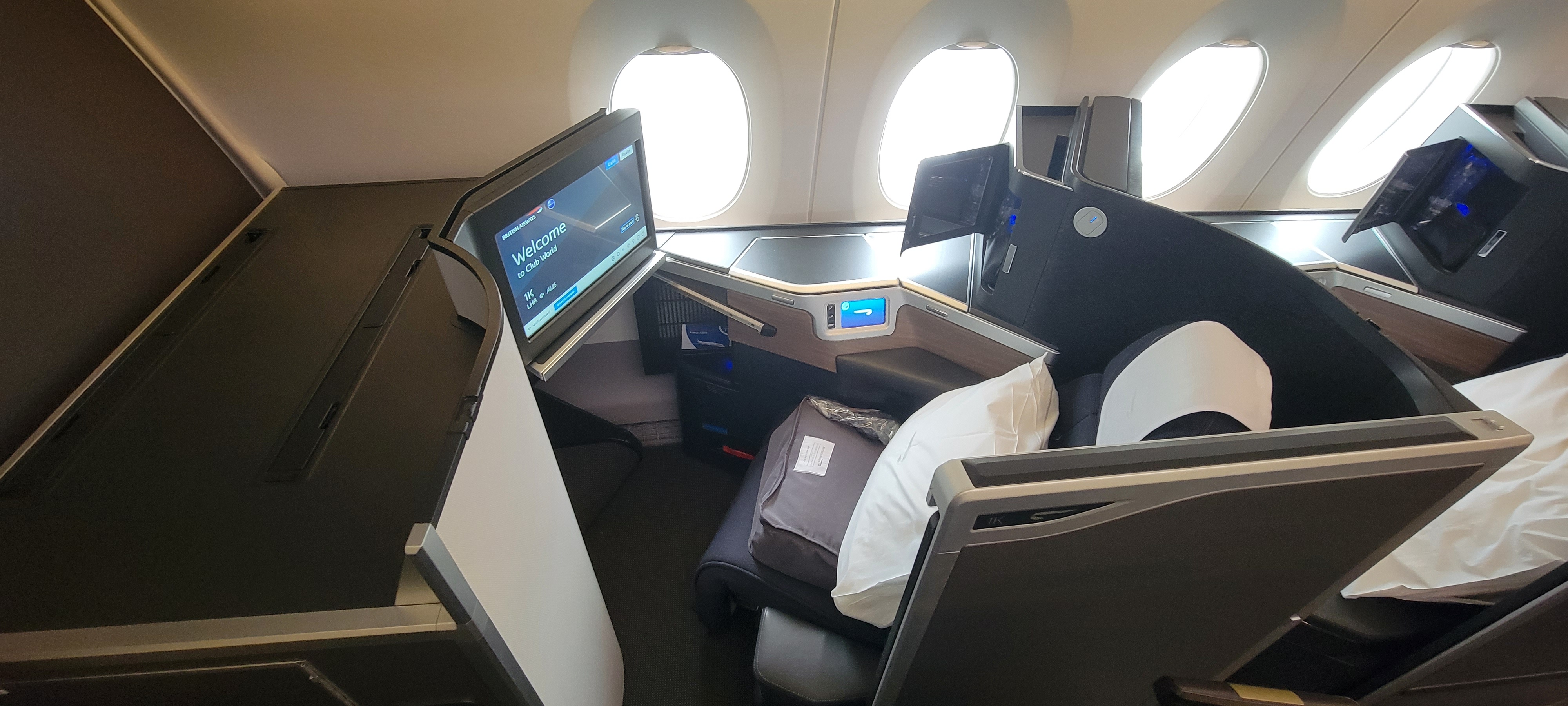I receive compensation for content and many links on this blog. Citibank is an advertising partner of this site, as is American Express, Chase, Barclays and Capital One. Any opinions expressed in this post are my own, and have not been reviewed, approved, or endorsed by my advertising partners. I do not write about all credit cards that are available -- instead focusing on miles, points, and cash back (and currencies that can be converted into the same). Terms apply to the offers and benefits listed on this page.
I sometimes assume too much – airline miles are old hat to me, I’ve been traveling for work for 3 decades and writing about this space for 22 years. But when I start talking to people who are familiar, and earn plenty of points, even some of the starting points are new.
So I started thinking, what are the 10 basic lessons to share with someone just paying attention to miles and points for the first time? And this is the list I came up with.
- Never let a mile go to waste. Sign up for the program, even if it’s just a one-off earning event. Many programs don’t expire miles anymore. I joined HawaiianMiles 21 months ago and I just added to them, and now they may even wind up as Alaska miles which are far more valuable. Would be kicking myself if I’d skipped it! What’s more, having points in my Hawaiian account already meant I needed to transfer fewer in from Amex recently. Even programs I don’t engage with much (less than every year and a half) are still worth picking up miles in rather than foregoing the points.

Similarly always sign up for promotions. You want to earn the most points for your activities. When you see a promotional offer, such as double points at a hotel chain, you’ll never remember to go back later to register when you make a reservation at a participating hotel. Spend a couple seconds clicking register when an offer comes in, then let the bonus points roll in without thinking about it.
- Track your points. Keep everything in one place. For well over a decade I’ve used Award Wallet to keep everything together and track balances. Hitting a button to refresh my accounts would even tell me if an account got drained by a hacker – far more quickly than I’d ever notice otherwise. And they track my trips so I know when an aircraft changes or if my seat assignment gets moved.
- Earn points for your online shopping and dining out. While you can maximize this, at a minimum make sure to earn points available for activities you undertake anyway. Link your primary restaurant spend credit card to the dining program of the loyalty program you like best. If you’re participating in more than one, in general the airline programs are more lucrative than the hotel ones, and Bilt’s is better still. Then if you eat at a restaurant that’s in the program even by mistake, you’ll earn the points.
Similarly, go through a shopping portal for all of your online purchases. You’ll get points for what you’re buying anyway. Take it up a notch by checking Cash Back Monitor first to see which programs offer what sort of return before deciding which program to click through to the online store, to earn the most, but just earning something is better than not earning at all.

- But don’t spend more money than you otherwise would. Don’t let online points-earning or credit card rewards induce you to spend more money. Earn for what you would do anyway. There are certain exceptions to this rule at the margin, but only the truly most attractive offers that come along every few years.
- Never earn just one mile per dollar for your credit card spend. It’s easy to supercharge your credit card points-earning, and credit cards are a majority of points earned. If you earn just one point per dollar (1) you are leaving points on the table, and (2) you’re buying points for at least two cents (since you’re foregoing 2% cash back or more) and that’s too much money.
Basically you’re going to wind up with two cards for your spending – one that earns the most in the categories you spend the most, and a second for spending that doesn’t earn a bonus with that card.
- Perhaps you have the The Platinum Card® from American Express. The only spending I put on this card is airfare since it earns an amazing 5 points per dollar spent, up to $500,000 of flights per calendar year.
I don’t put the rest of my spend on this card at only 1 point per dollar, though. Fortunately those who want to stay in the Membership Rewards ecosystem have The Blue Business® Plus Credit Card from American Express which earns 2X points on everyday business purchases such as office supplies or client dinners. 2X applies to the first $50,000 in purchases per year, 1 point per dollar thereafter. Terms and limitations apply. It’s a no annual fee card, too (see rates and fees).
And the points transfer to:
- Star Alliance: Air Canada, ANA, Avianca, Singapore Airlines
- oneworld: British Airways, Cathay Pacific, Iberia, Qantas, Qatar
- SkyTeam: Aeromexico, Air France KLM, Delta, Virgin Atlantic
- Non-alliance: Aer Lingus, Emirates, Etihad, Hawaiian, JetBlue
- Hotels: Choice, Hilton, Marriott

- Star Alliance: Air Canada, ANA, Avianca, Singapore Airlines
- Maybe you have a Chase Sapphire Preferred® Card or Chase Sapphire Reserve®. Those cards are great for travel and dining spend but really not for the rest of your spending since they’d earn just one point per dollar. Chase loves that spend since it doesn’t have to invest as much rewarding you for it, but that’s not what you’re after.
You can apply for a no annual fee Chase Freedom Unlimited® which earns 3x on drugstore purchases and dining at restaurants, including takeout and eligible delivery service, and unlimited 1.5x cash back on all other purchases. Then, combine those points into your Sapphire Preferred or Reserve account in order to redeem them for travel through the Chase portal or transfer to a variety of airlines or hotel programs:
- Star Alliance: Air Canada, Singapore Airlines, United
- oneworld: British Airways, Iberia
- SkyTeam: Air France KLM, Virgin Atlantic
- Non-alliance: Aer Lingus, Emirates, JetBlue, Southwest
- Hotels: Hyatt, IHG, Marriott
- Star Alliance: Air Canada, Singapore Airlines, United
- Citi Strata PremierSM Card earns 10 points per $1 spent on Hotels, Car Rentals, and Attractions booked on CitiTravel.com; 3 points per $1 on Air Travel and Other Hotel Purchases, at Restaurants, Supermarkets, Gas and EV Charging Stations; 1 Point per $1 spent on all other purchases.

Meanwhile, the Citi Double Cash Card has no annual fee and earns 2 points per dollar on all spending. Combine those points with your Strata Premier card, then transfer to:
- Star Alliance: Avianca, EVA Air, Singapore, Thai, Turkish Airlines
- oneworld: Cathay Pacific, Malaysia Airlines, Qantas, Qatar Airways
- SkyTeam: Aeromexico, Air France KLM, Virgin Atlantic
- Non-alliance: Emirates, Etihad, JetBlue
- Hotels: Accor, Choice, Leading Hotels of the World, Wyndham
- Perhaps you have the The Platinum Card® from American Express. The only spending I put on this card is airfare since it earns an amazing 5 points per dollar spent, up to $500,000 of flights per calendar year.
- Understand why you’re getting, keeping, and using your rewards card. A rewards credit card generally provides (3) different types of value. Know why you are getting a card, and use it accordingly.
- Some cards may have a large initial bonus offer and that entices you to get the card but once you’ve earned that, it isn’t especially rewarding for your spending and shouldn’t be your go-to. Before any annual fee hits after a year considering whether you want to keep it.
- Other cards have great benefits but aren’t super rewarding for your spend. You may keep it for free checked bags and priority boarding, lounge access, or companion airfare – but again it may not warrant using it for your spend.
- While there are cards that generate the most rewards for your spend and that’s where you want to put your spending.
- That means it’s ok to try out a card for the initial bonus offer, but if it’s not high enough value to keep don’t. Keep the cards that are worth the fee for their benefits, put spend on the cards that give you the strongest rewards. Every card should have a purpose in your wallet or drawer.
- Be strategic about the points you accumulate. Know what you’re going to do with the points you earn, or at least how they align with your rewards goals. When I first got into miles and points I was picking up points because I could, but I wasn’t strategic. I got a Lufthansa Miles & More card (when one was first available in the U.S.) but didn’t focus enough on the program to earn enough points to really take advantage of the program, and even let those points expire.
- Transferable points are better than airline miles. Transferable points are the best to collect – you can top off an account for the award you need, or move points to a program when you know what award you want and that the program has the availability you’re looking for. You have much better flexibility with Chase points than United miles, or with Amex points than Delta miles. You can transfer their points to an airline, and you get to pick which one later. Plus, their cards let you earn more points faster than the airline’s co-brand.
Think about Ink Business Preferred® Credit Card when it had an offer to earn 120k bonus points after you spend $8,000 on purchases in the first 3 months from account opening. (Offer expired) That’s 128,000 points at least. And 136,000 is enough for two roundtrip business class awards on Iberia between the Northeast and Madrid when saver space is available through Iberia Plus. Or book one of those awards and spend the remaining 60,000 points on hotels, transferring your points to Hyatt. This is even better when travel partners or spouses each earn points.
- Earn and burn, don’t save for a distant future. Decades ago people used to try to build a ‘travel IRA’ earning miles while flying for business with the plan to spend them when they have time in retirement, but they quickly learned that programs devalued their miles too frequently for this plan to work. The best award values go away and award levels rise.
The implication isn’t that you should light your miles on fire today, but that you should enjoy them now rather than deferring gratification. Earn and burn in the same period, and then earn some more and devaluations don’t matter so much – you aren’t hurt by any given devaluation, and you can make rational earn decisions based on the chart in effect at the time.
What would you add to this list of 10, and to make room for other ideas which ones would you drop – deferring to a later or more advanced list or that don’t need mentioning at all?
For rates and fees of The Platinum Card® from American Express, click here.
For rates and fees of The Blue Business® Plus Credit Card from American Express, click here.


Great advice. This article is very helpful. Thank you @Gary!
Except , some are frugal savers , and are not reckless with their money .
“Warren Buffett” uses coupons , and keeps dimes in a coin pouch . Emulate “Warren” .
Nice info, Gary! How about a similar post for the non-business traveler? But you are absolutely right…. Earn and burn to avoid as much devaluation as possible.
I wish I had learned the earn and burn before Delta destroyed my miles. I was doing the travel IRA and it backfired when I ended up with Sky Pesos.
I’ll also add that earning points/miles for (continuously devalued) airlines or hotels should be balanced with higher valued cash cards. My two examples:
1.) I have Verizon as my cell provider. I have their Verizon Visa which earns a rather staggering 4 points per dollar at grocery stores and gas stations and 3 points per dollar at restaurants. That is payable directly to lower my phone bill each month automatically. Now AmEx has a card that also earns 4 points per dollar at grocery stores up to a certain amount. Most bloggers will not agree with me, but considering the constant devaluations of mileage programs and difficulty in finding flights to align with them, I also consider the actual cash value of the points. In AmEx’s case it’s $.006 per point. So the 4 points earned per dollar at the grocery will delivery a cash value of $0.024 per dollar. I balance that with the straight up $0.04 I earn on my Verizon Visa card.
2.) I have a BMW vehicle and have the BMW Mastercard. It earns 1.5 points per dollar for every purchase. For gas it’s 3 points per dollar and 2 points for restaurants. Using the earned points for my monthly vehicle lease payment they are worth 25% more. So the 1.5 point per dollar for every base purchase turns into $0.01875 (rounds to 1.9).
I’m not suggesting that anyone follow my own strategy as I do still reach for my AmEx or Chase cards frequently. I’m just saying to perhaps balance with common sense and don’t sacrifice actual real cash for a potential theoretical redemption that devalues almost daily. When there are real opportunities to take advantage ‘now’, balance that with the building up the points.
I realize this is a points/miles blog, just offering some additional things to think through.
Gary
I wonder if the points multiplier on the Amex platinum applies to mileage ticket taxes.
@Michael que – yes
I am an earn and burn person. Not that long ago, airline travel program miles would be eliminated after a while (a lot of time after 2 years). That is still common among Asian airlines. Also, I calculate that I am near one million butt in seat airline miles across all airlines I have traveled on but almost none were due to OPM. I wonder how many one million milers have actually flown one million miles on that given airline and all on their own dime or miles earned by flying.
Great article. Good time to take inventory of what I have and what I need! Thanks Gary
Solid list. When you went through the list of cards in your wallet, didn’t you list an AA card that you spend a lot on in order to get a companion certificate? You also said that you put all of your airline spending through your Amex platinum, meaning that you put everyday purchases at 1X on the AA card. Doesn’t that directly contradict #5?
Maybe a step zero, but how to get credit in the first place. What if you are 18 or 19 and only have a debit card? How do you get a no fee rewards card?
I had a nephew recently with no credit and no luck from Chase, Wells Fargo or Cap One on no fee 1% back cards.
@Andrew Bussa – he should start with a Discover student card, or, have a family member add him as an authorized user to obtain their credit history (as long as it is someone carrying no balances)
I still don’t understand the “earn and burn” strategy, as it would necessarily require one to hold off earning, or take part in burning at what may not be the best time. It would make sense if devaluations were accompanied by commensurate increases in sign-up bonuses or spend category bonuses, in which case I would understand why one would hold off on applying. Since that is not the case, why not go for sign-up bonuses now and stash your points away? I don’t want to be “pressured” into taking a trip now that I might not otherwise simply to burn up my portfolio. I’m in my mid to late sixties now, and have accumulated a large number of points and miles, and can basically fly and stay anywhere I want, when i want. Sure, I it may cost me more points or miles that trip than it would have two or three years back, but in the meantime, I’m replenishing the points and miles I’m using through my new applications and spending. My “earn and save’ strategy has worked quite well for me!